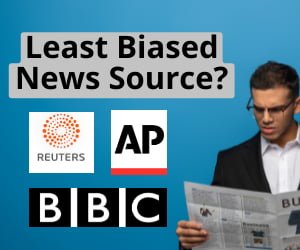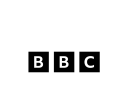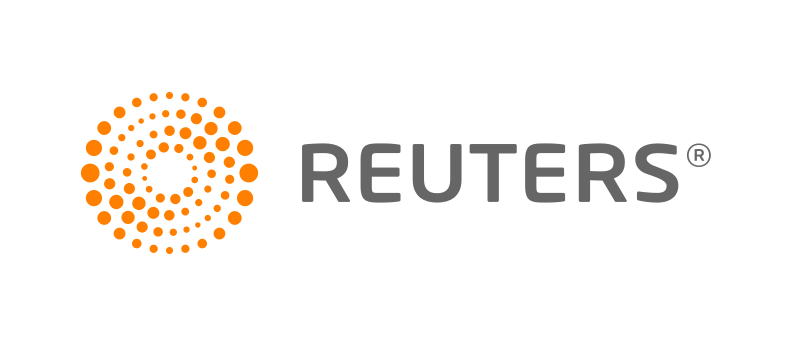
What is bias and how does it affect American media? Definitionally, bias is a disproportionate weight in favor of certain ideas or an ideology. They can be innate or learned and are usually against either an individual, group, or ideas/ideology. All media sources are most likely biased to an extent. The key is to figure out to what extent and in what direction. There’s at least two sides to an issue, so bias theoretically would be determined by first how much to a side you go and how it’s viewed (as either a centrist position or a radical position). Then, if there’s a certain number of issues, bias can further be determined by how much to a certain side you go to (ex. 9 issues you lean to the left and 3 issues you lean to the right).
It’s both biased if you lean a certain way in a lot of issues or if you switch how you learn in a lot of issues. For the latter, you might be centrist overall but be biased in a lot of issues to get there (ex. 6 left and 6 right). For a person or news source with no bias, either they can’t lean to one direction (although that itself could be seen as “biased”) and/or they cover both sides in relatively equal proportions. Oftentimes, bias and bias ratings depend on one’s perspective which is why they themselves can be viewed as subjective based on the assumptions that they make.
On the Biasly chart shown below, the values range from moderate to extremely liberal/conservative:
- Moderate/Neutral: neutral tone, no spin, no lean
- Somewhat Liberal/Conservative (Moderate-left/Moderate-right): somewhat of a spin, slight lean but overall neutral
- Very Liberal/Very Conservative: strong spin, strong positions on topics
- Extremely Liberal/Extremely Conservative: absolute, extremely strong spin; obvious stance; speaks down on opposing view; states objection or favor for a stance
Least-Biased News Sources List
Centrists often take either side in equal proportions (like be socially liberal and fiscally conservative) or be down the middle on a lot of these issues. One thing to note is that there can be exceptions for both groups. These are the general beliefs but it can vary from person to person.



Right now, some of the most trusted, centrist, independent, and relatively nonpartisan news sources (as rated by media bias polls and the public themselves) would be BBC News, Reuters, and the Associated Press. Next, we will examine those three and see if they’re biased and (if they are) to what extent and in what direction. Those three were chosen because those organizations tend to be rated as the least biased. Generally, according to Pew Research center, Americans distrust a lot of media content, thinking they either favor Democratic or Republican sources. They consider C-SPAN (a nonpartisan organization that records the mood of Congress) as the least partisan and their daily newspaper as the most partisan. What’s notable furthermore is that, also according to Pew Research, journalists tend to fear misinformation more and are not willing to give either side equal coverage compared to the general public. The general public believes that journalists should try to cover all sides equally, no matter how bad or biased they may be.
Evaluation of the Sources
Three sources will be evaluated: BBC News, AP News, and Reuters. These articles will be evaluated to see if they have any bias. The advantage of using these particular sources is that they are usually rated moderate so there would be theoretically a greater quantity of moderate sources. On the downside, there could also be moderate sources on more liberal or conservative websites that are being omitted due to the lean of those media sources overall. Another disadvantage is that moderate sources could hold some bias and/or the rater could be slightly biased as well. The three sources up for consideration are the following:
- BBC News article about the latest news on the Israel-Palestine War
- AP News article about the US aid package to Israel and Ukraine
- Reuters article about North Carolina investing in EVs for the future
1. BBC News

Example Title: Tank seen on key Gaza road as Israeli forces push deeper into the north
Link: https://www.bbc.com/news/world-middle-east-67261366
Bias Rating: https://www.biasly.com/sources/bbc-bias-rating/
The first source is international news about how Israel is invading Gaza using rockets and tanks. The article starts off by showing how the Israeli military is using its forces to invade Gaza and then Prime Minister Netanyahu’s remarks about the current conflict. Then it goes back to the actions of the particular tank column in Gaza. With their focus being destroying Hamas, Israel launched another 600 air and artillery strikes targeted at specific terror targets within Gaza. The story then transitions to the messy evacuation situation concerning Palestinian citizens in Gaza, particularly focusing on the disparate evacuation of hospitals and the disarray that they’re now in due to having to focus on patients and either deal with refugees and/or evacuate themselves. Overall, the story has a nonpartisan bias, due to it being international in nature and also a lack of any particular takes or tone. It simply reports on what’s happening in Israel and Gaza without taking side or saying who’s right and wrong in the conflict.
2. AP News

Title: U.S. military and diplomatic leaders urge a divided Congress to send aid to both Israel and Ukraine
Bias Rating: https://www.biasly.com/sources/ap-news-bias-rating/
The second source is the AP or Associated Press. This concerns the United States about whether to give aid to various places such as Ukraine, Israel, humanitarian efforts, the Indo-Pacific, and the southern border. Democrats in the Biden administration such as Blinken and Austin want to send a $105 billion package to Ukraine and Israel immediately. It’s running into opposition in the House, where new Republican Speaker Mike Johnson wants only aid for Israel, not for Ukraine, and cutting funds for the Internal Revenue Service in order to do that. The House alternatively has a slimmed-down proposal of $14.5 billion that would run into immediate opposition by Senate Democrats and Ukraine aid-supporting Senate Republicans. The Democrats, for the most part, are united on aid for both Israel and Ukraine while there are divisions among Republicans in both the House and Senate. Overall, the article seems relatively independent and nonpartisan, showing the mood of both sides of the aisle and the divisions that are apparent.
3. Reuters

Title: Toyota pledges $8 billion more for US battery plant to rev up EV push
Bias Rating: https://www.biasly.com/sources/reuters-bias-rating/
The third and last source is Reuters. Toyota announced a new investment in its North Carolina electric vehicle production plant, bringing its total investment to around $14 billion and resulting in 5000 jobs. Earlier their focus was on hybrids and hydrogen fuel cell vehicles but now they are focusing on EV output like other automakers such as Ford and General Motors. Toyota’s new plant, set to open in 2025, will be its first automotive plant in the world. North Carolina as a whole is increasingly becoming an EV hub, with more and more electric vehicles in the US being produced here. This article, while relatively nonpartisan, has a bit of liberal bias since it has favorable news about electric vehicles and liberals are known for being proponents of electric vehicles. In conclusion, a least biased news source probably doesn’t exist but one could come close to being as unbiased as possible.
Bias: Liberal vs Conservative
In American media, there are often both left-leaning and right-leaning media sources.
Liberal Ideologies
Student News Daily listed out a sample of both left-leaning or liberal ideas and right-leaning or conservative ideas. Left-leaning people often exhibit common American liberal ideas such as the following:
- Being pro-choice on abortion
- Think African Americans and Hispanics should be helped out through affirmative action
- The death penalty should be abolished
- Government regulation to a varying degree is good, etc.
- Think that public schools are ultimately what the government should continue to support, raising teacher’s salaries and decreasing class sizes
- Ethical and necessary for the government to fund embryonic stem cell research; they therefore support it
- In terms of energy, they favor decreased usage and production of fossil fuels like oil, coal, and natural gas in favor of alternative energy sources like wind and solar
- The controversial practice of euthanasia (medically assisted suicide) should be legal
- There’s also belief in anthropogenic climate change, the stance that the current episode of global warming is caused primarily through anthropogenic (human) actions
- Support gun control laws
- Free or reduced government-controlled health care (like Obamacare or Medicare For All),
- Believe in the separation of church and the state, not wanting the government to favor any particular religion
- Widespread support for increased taxes, preservation of Social Security, legal same-sex marriage and LGBT rights, welfare for the needy, and a globalist stance such as supporting international organizations and agreements such as the United Nations
Here are a few examples of notable left-leaning sources:
Conservative Ideologies
On the other hand, conservatives generally believe in the following:
- Life begins at conception (pro-life)
- Merit-based ability ranking
- Death penalty a punishment for murder
- Reduced government regulation to allow the free market to flourish
- Support for charter schools and school vouchers (school choice)
- Embryonic stem cell research is morally and ethically wrong; the government should not fund them
- Fossil fuels are a necessary good and more should be done to extract them in America
- Neither euthanasia nor physician-assisted suicide should be legal because they are also moral wrong
- While believing that global warming is happening, they believe that the temperature change is natural and has occurred over long periods (does conflict with Young Earth Creationism)
- Gun rights should be kept and expanded
- Support for a competitive healthcare system with little government interference
- Oppose illegal immigration while being mixed on various forms of legal immigration
- Respect ownership and private property rights
- Be mixed on separation of church and state, Social Security, and gay marriage and LGBT rights
- Favor lower taxes and be a bit isolationist when it comes to national organizations like the United Nations
Here are some right-leaning sources:























